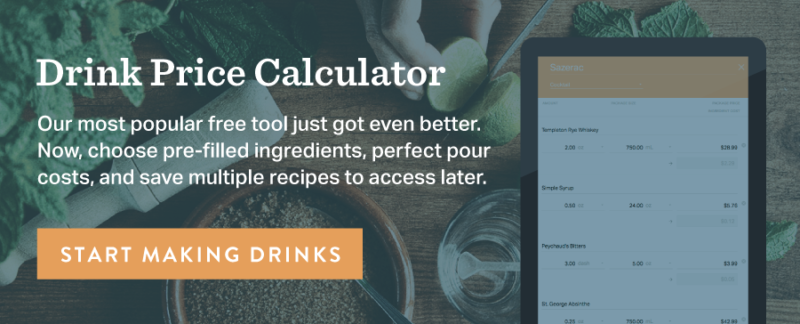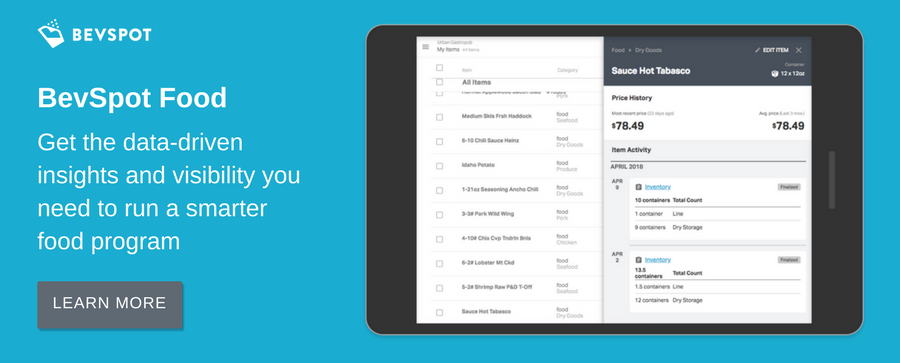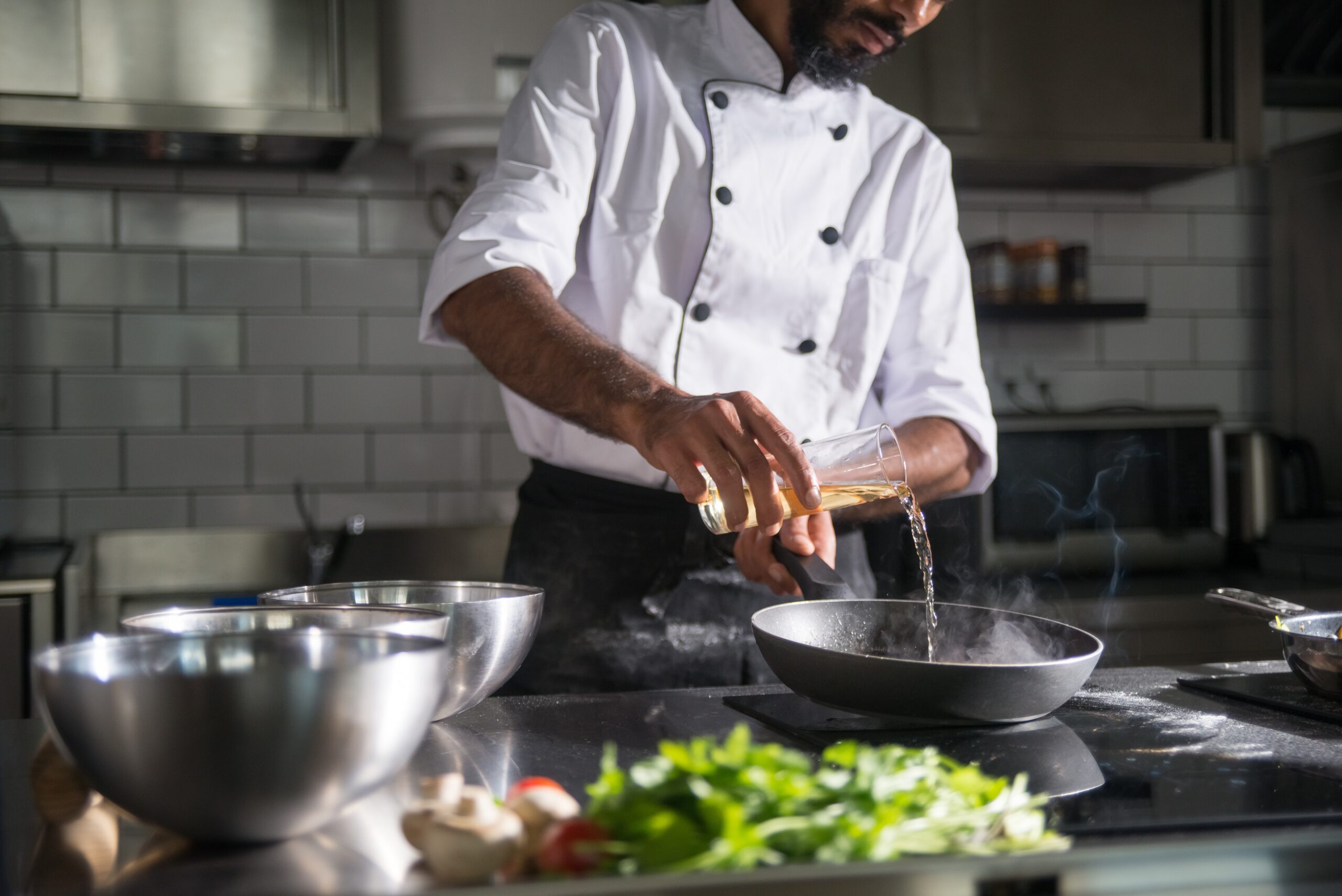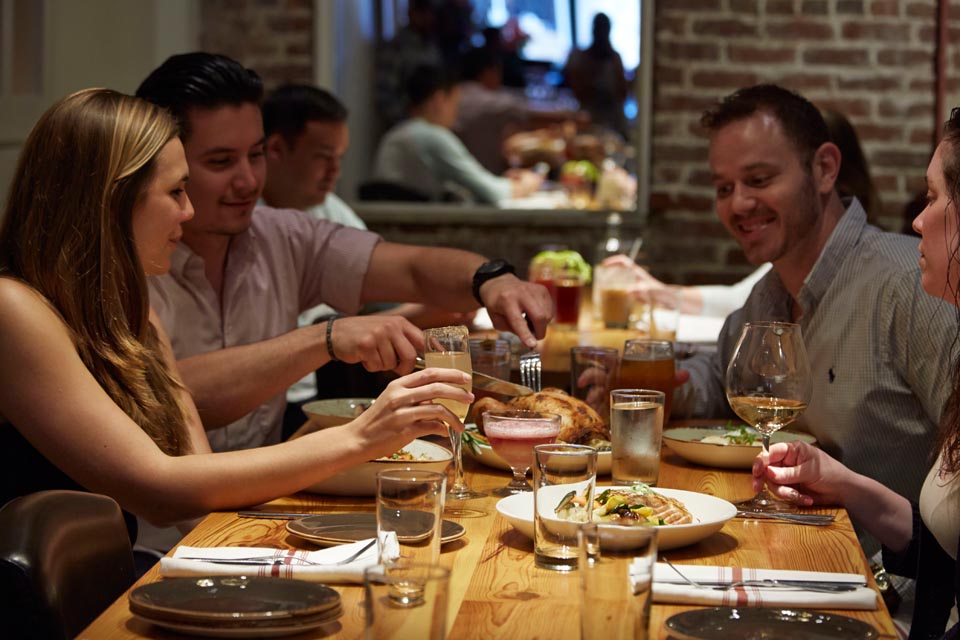
Rory Crawford
October 13, 2015
Product
Fact #1: Knowing how to calculate and interpret pour costs is critical to your bar’s business.
Fact #2: Achieving a successful pour cost is almost impossible without pricing your drinks appropriately.
With hundreds of drink offerings across your wine, spirit, and beer program, and ever-changing product listings and customer preferences, pricing drinks can pose a significant challenge for bar management. Here’s a quick guide to solving it.

How to Price Drinks
To price a drink, calculate the cost of your drink by adding up the cost of ingredients. Choose a pour cost percentage (or profit margin) to target. Price the drink by taking the cost of your ingredients and dividing by the target pour cost.
Price ($) = Cost of Ingredients ($) / Target Pour Cost (%)
In a previous study, we’ve found that good target pour costs were 20% for beer, 14% for liquor, and 22% for wine. And when it comes to setting prices, our free Drink Price Calculator makes the math easy.
When pricing your drink menu as a whole, there are two additional considerations to keep in mind. As an example, we’ll use our own hypothetical bar.
BevSpot Bar: - $100,000 in monthly beverage sales - 50% spirits, 25% beer, 25% wine - 20% target pour cost
Always Think About Variance
First, we need to remember that variance (lost product or shrinkage) directly increases our pour costs. Any lost product, although not directly affecting sales, does factor into usage and therefore, pour cost. Since industry shrinkage hovers around 20%, we’ll want to factor this anticipated shrinkage into our pricing to ensure you have a cushion.
Pour Cost = Inventory Usage / Sales
If BevSpot Bar generates $100,000 in sales each month and wants to achieve a 20% pour cost, factoring in 20% variance means that the bar actually needs to price its drinks at an average pour cost of 16.67%.
It can be a bit confusing, but it’s an essential lesson in maintaining a consistent pour cost. By pricing drinks this way, BevSpot Bar would generate $16,670 in usage through sales which would be added to an additional $3,334 of expected variance ($16,670 x 20%):
$16,670 + $3,334 = $20,004 of total usage, yielding an actual pour cost of 20% ($20,004 usage / $100,000 sales).
Incorporate Sales Mix Across Products
The second thing to keep in mind is that our target pour cost of 16.67% is an average. To end up at this number, we need to incorporate how BevSpot Bar’s sales fall into different product categories and decide the best way to divide our pour costs. It likely wouldn’t work to consistently price all products across spirits, wine, and beer at 16.67%, knowing what our client base looks like and how our sales spread out. So how do we find the right target for each product category that will achieve average sales usage of 16.67%?
Given our customers and sales history (50% of monthly sales are in spirits), we know that we can achieve a lower pour cost in our spirits compared to our wine and beer, and our beer is going to be the least profitable. If we price our drinks on average to achieve a 10% pour cost on spirits, a 20% pour cost on wine, and a 27% pour cost on beer, we would achieve our target inventory usage of around $16,700:
(10% x $50,000 spirit sales) + (20% x $25,000 wine sales) + (27% x $25,000 beer sales) = $16,750 total sales usage
Mastering these two best practices will help you avoid falling into the most common traps of drink pricing. Combine that with a plan to reduce your variance and you’ll set yourself up for success.
Keep up to date with our Bar Management Series for more on driving lower liquor costs.
Schedule 15mins to chat with a product specialist
Start a FREE Trial Today! BevSpot offers full product education and account setup for all customers! No card Information needed!





